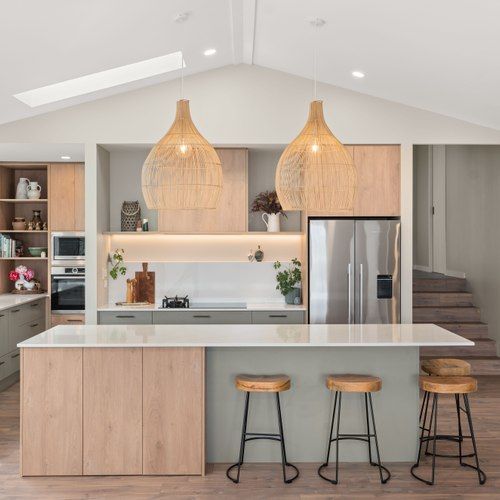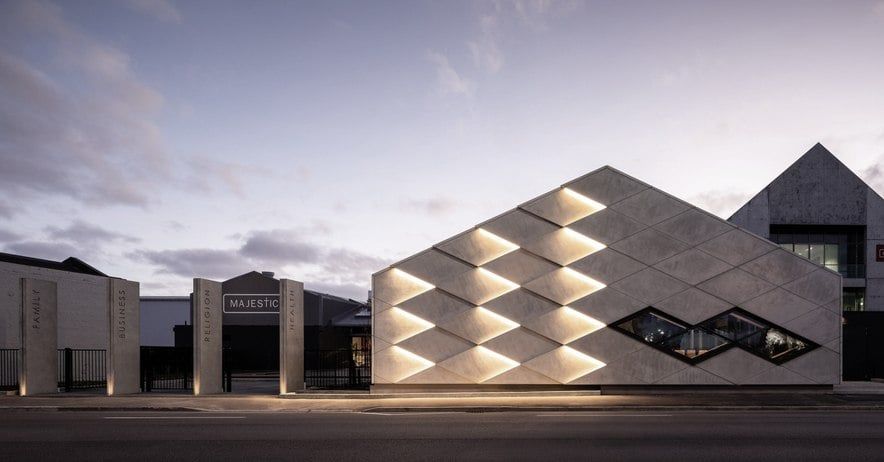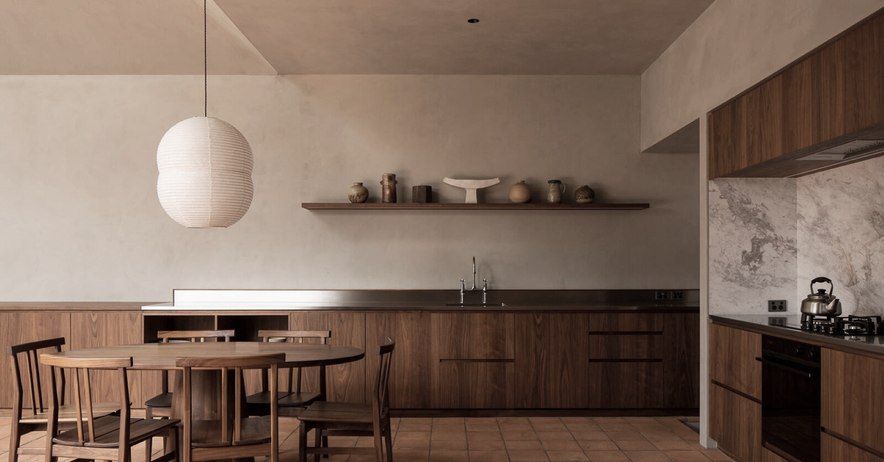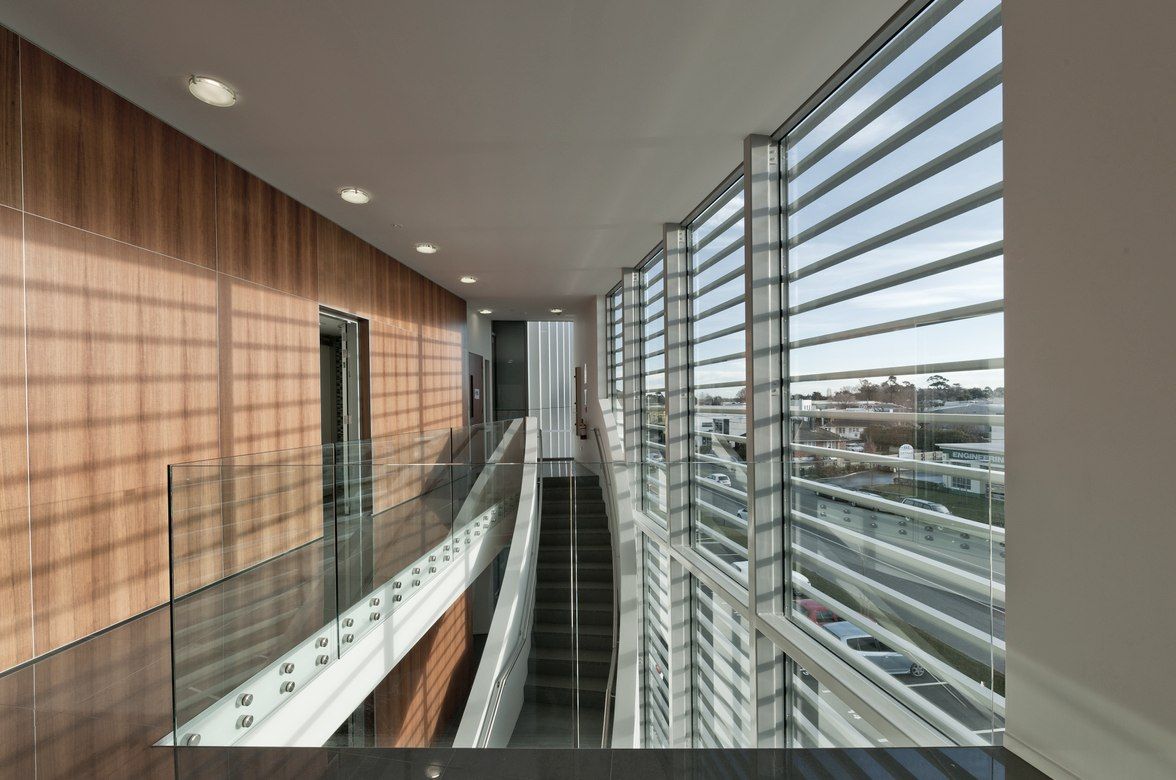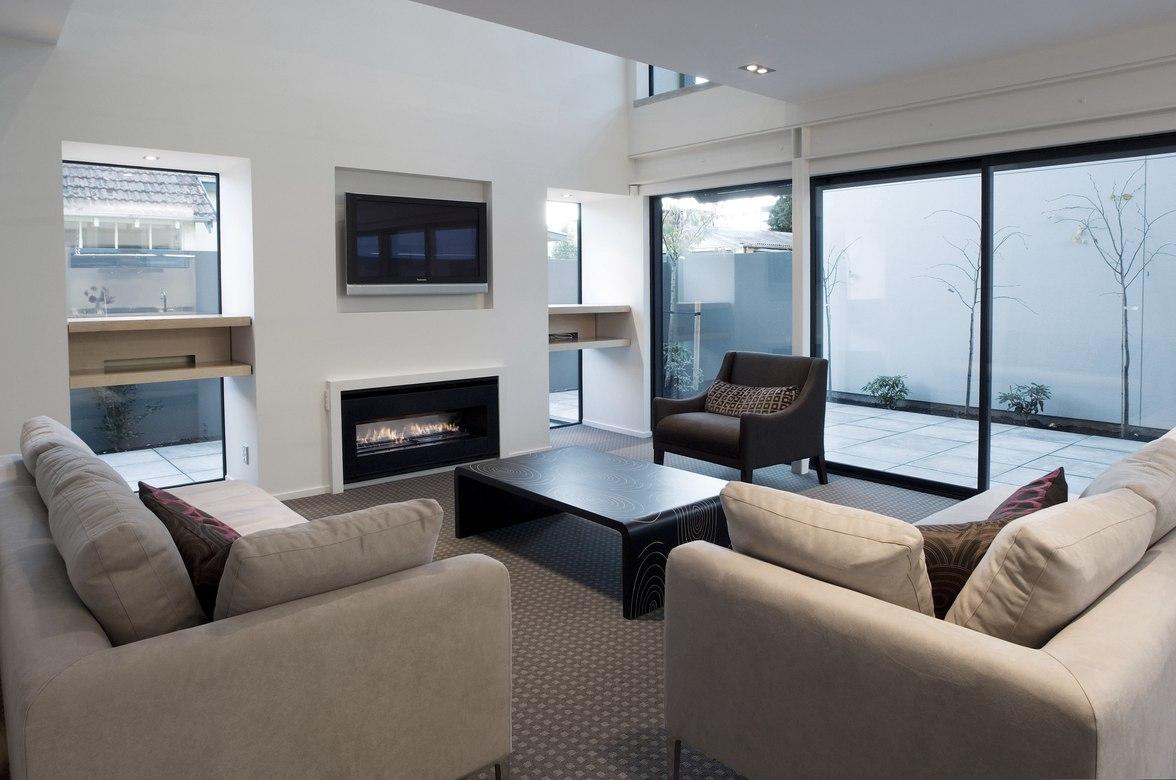Lintrathen Gardens Townhouses
By Sheppard & Rout Architects
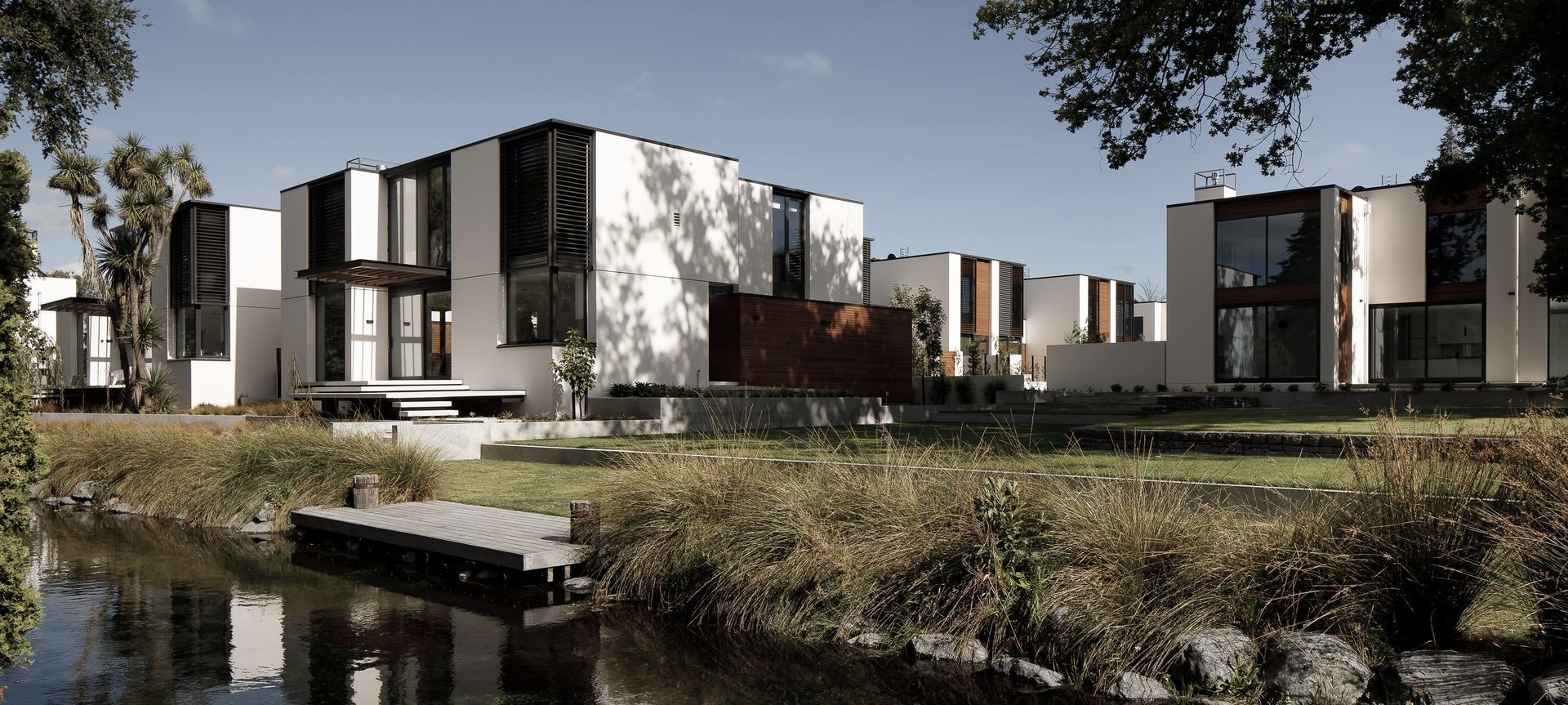
On a 5,500m2 site in a suburb steeped in history, this townhouse development is both a stark contrast to the original homesteads that remain and synonymous with the large leafy sections the area is known for.
“The original three-storeyed home on this site was badly damaged in the earthquake, to the point where it essentially imploded and had to be demolished,” architect David Sheppard explains. “While the earthquakes did huge damage to numerous homes in this area, the trees were undamaged and therefore remain a key part of this heritage area of Christchurch.”
And so it was beneath the trees that a contemporary riverside development was designed to complement the existing vernacular of Fendalton and to offer an option to those who wanted to remain in the suburb without committing to a large section and garden.
“A lot of people wanted to stay in the area post earthquake but in a more modern setting, with many looking for a low maintenance city base or to downsize from larger family homes.”
The brief therefore became about creating a contemporary townhouse development that offered a sense of community and continuity with the garden-like setting of the riverside suburb.
“With the site bounded by the river to the south and with large trees on both the northern and southern boundaries, we wanted to achieve as much openness as possible. We achieved this by creating a central, communal garden area that leads through the site and down to a large riverside green capped by a huge old oak tree. These central open areas create a green belt, with the sides of the site used to develop two buildings incorporating eight townhouses while a further two standalone dwellings are sited at the southern end and open directly out to the river.
“By positioning the central focus of the development on the landscaping and grounds, we were able to retain that sense of homes set within the landscape that Fendalton is known for—so much so that when driving by, you get the sense of the buildings existing beneath the mature trees. There’s a lovely coalescence with the trees that have stood in this area for decades and remained undamaged by the earthquakes.”
The orientation of all the buildings on the site allows for each home to enjoy both morning and afternoon sun, with each incorporating its own private outdoor space so that while the communal grounds are a pivotal feature of the development as a whole, the occupants of each dwelling are not solely reliant on it for their outdoor space.
Constructed with a simple palette of materials, including Hebel insulated blocks with a plastered finish broken up with cedar accents, black aluminium louvred screens and strategic planting, in combination with contemporary flat roofs, the development offers an elegant aesthetic which will grow over time as the new planting develops to further articulate the garden setting.
At night, the sense of nature’s scale in comparison to the dwellings is accentuated. In the darkness the houses cast perfect reflections onto the river yet despite their illumination they remain overshadowed by the reflections of the vast tree canopies and planting that dance larger than life across the water as they move in the breeze.
Words: Clare Chapman
Photography: Jason Mann



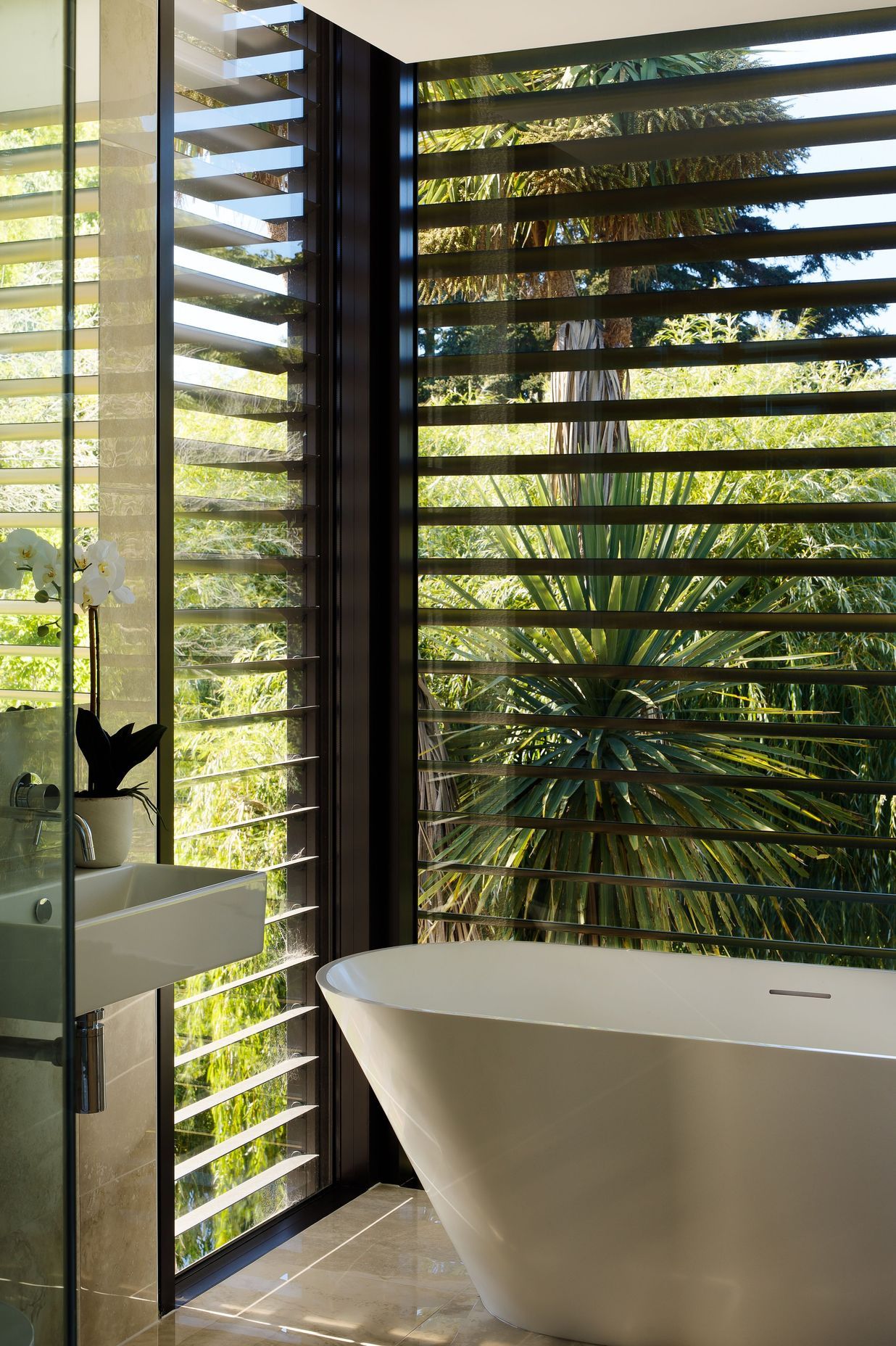
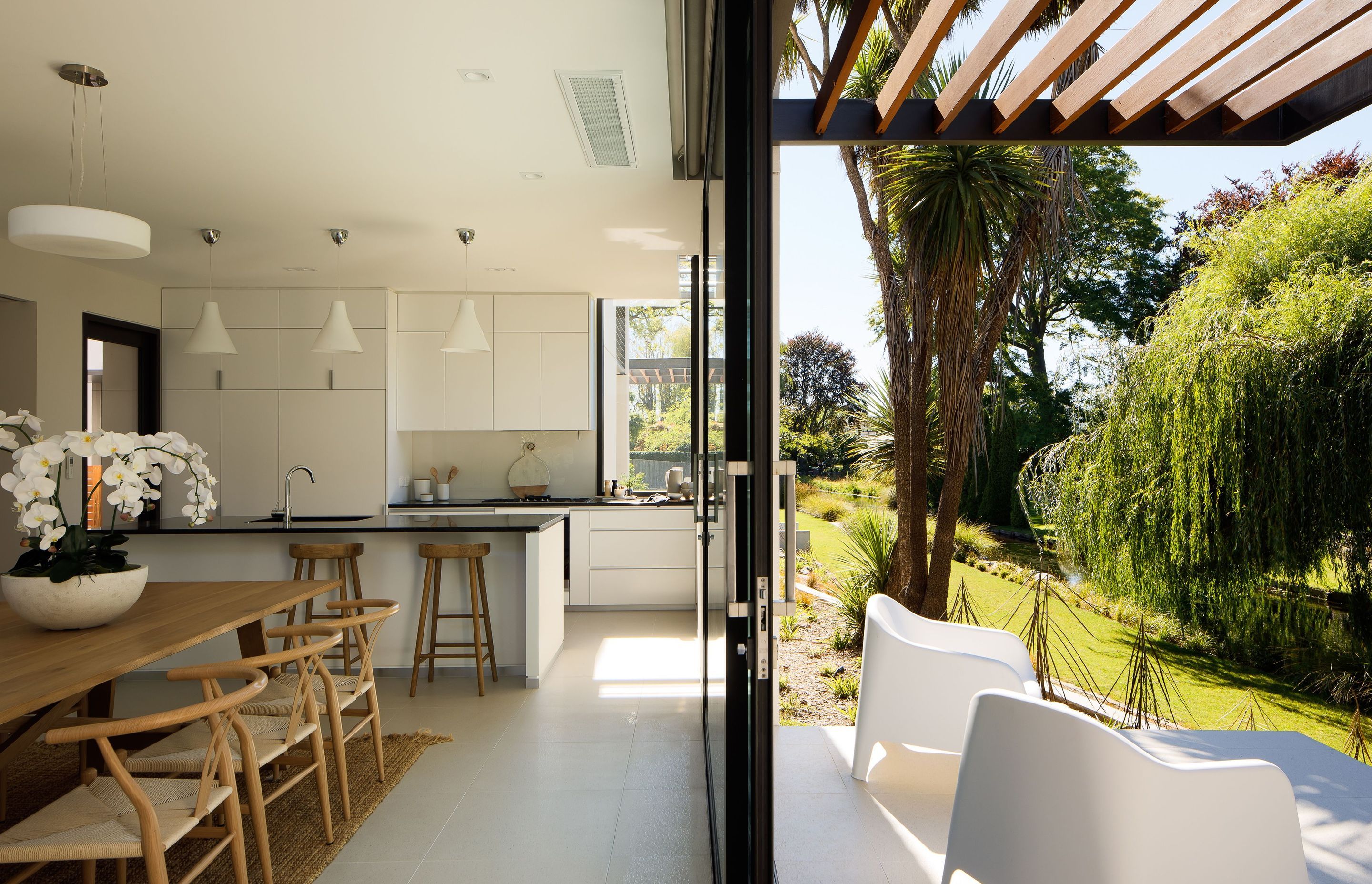
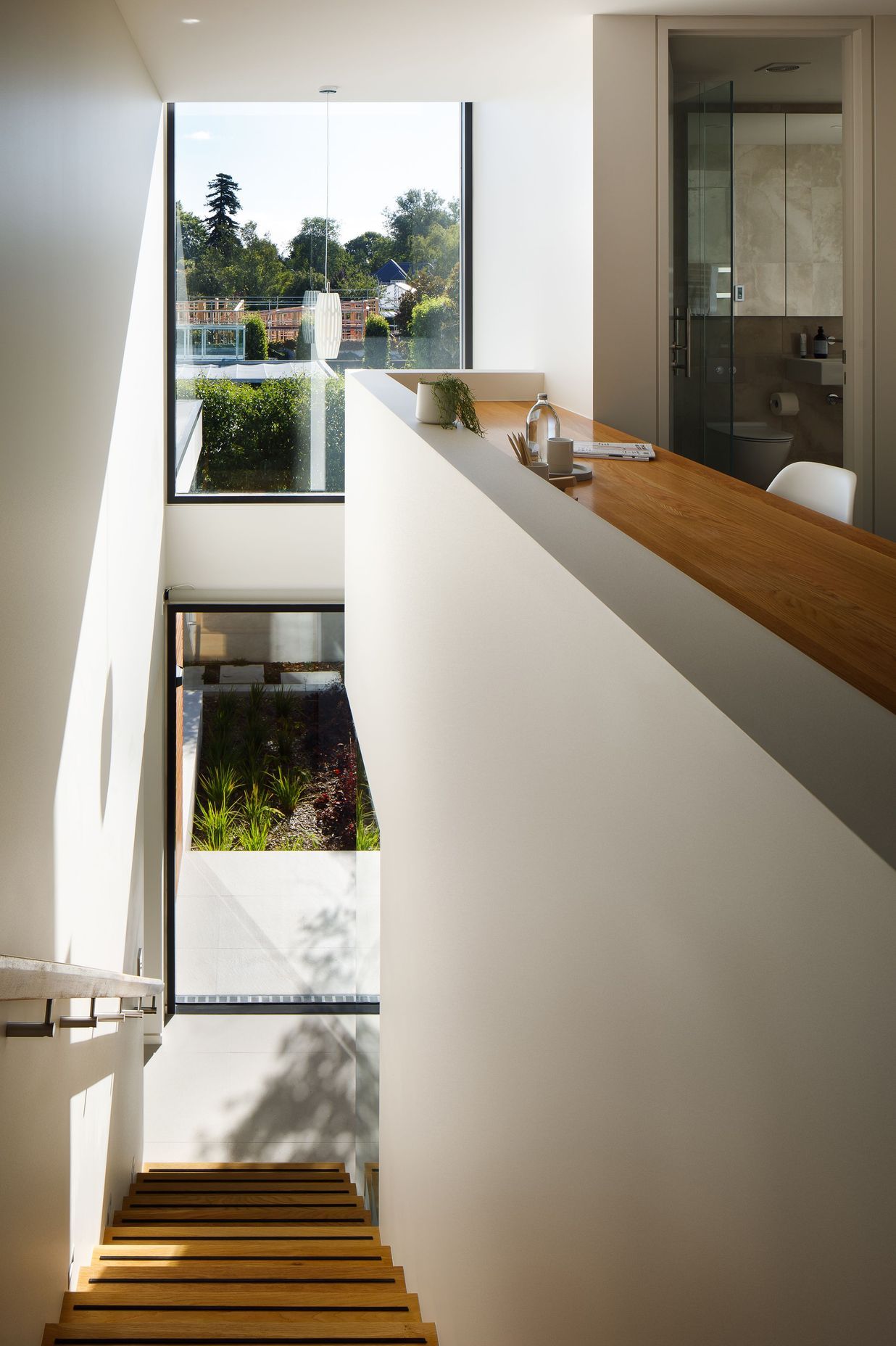
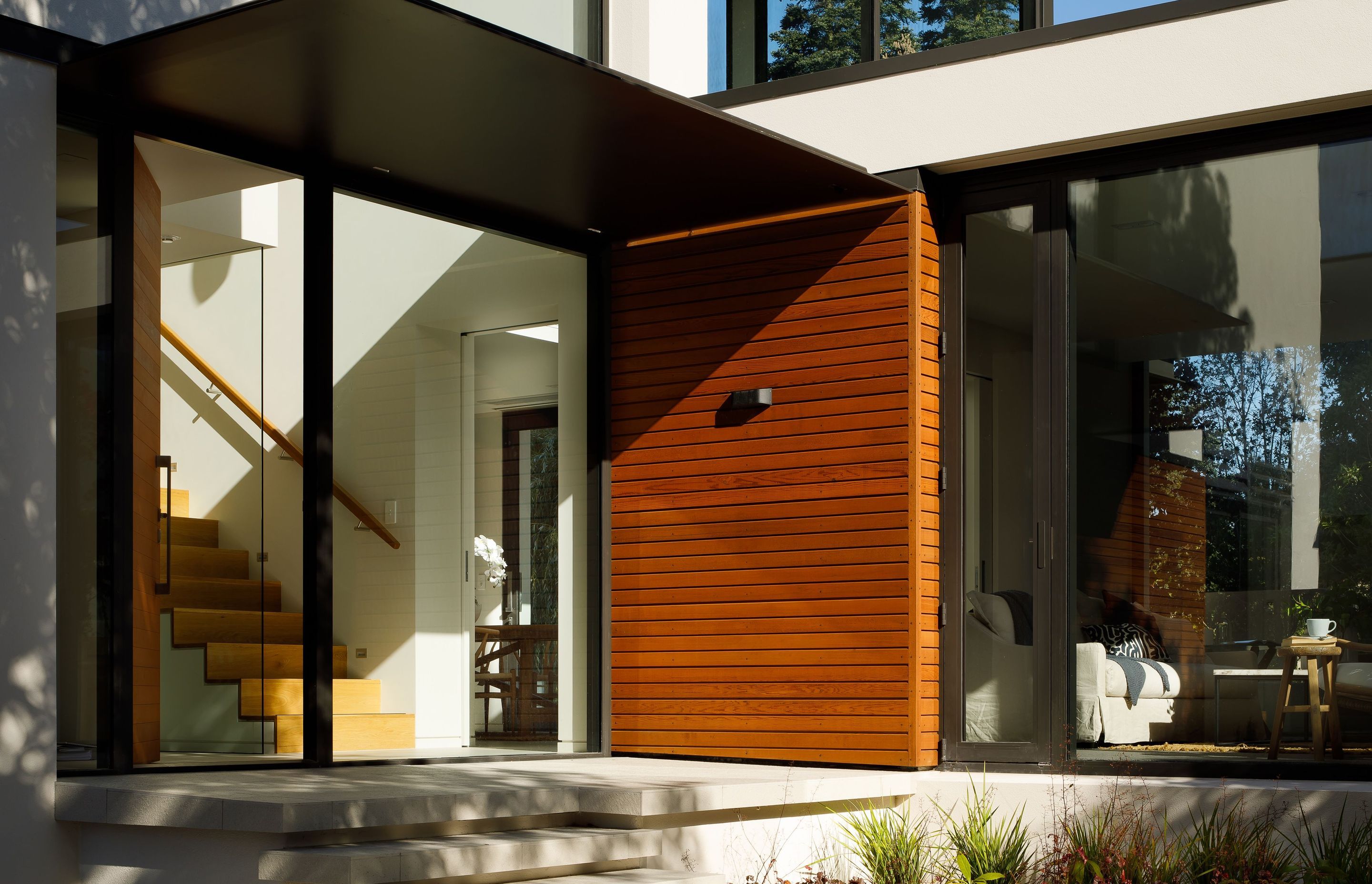

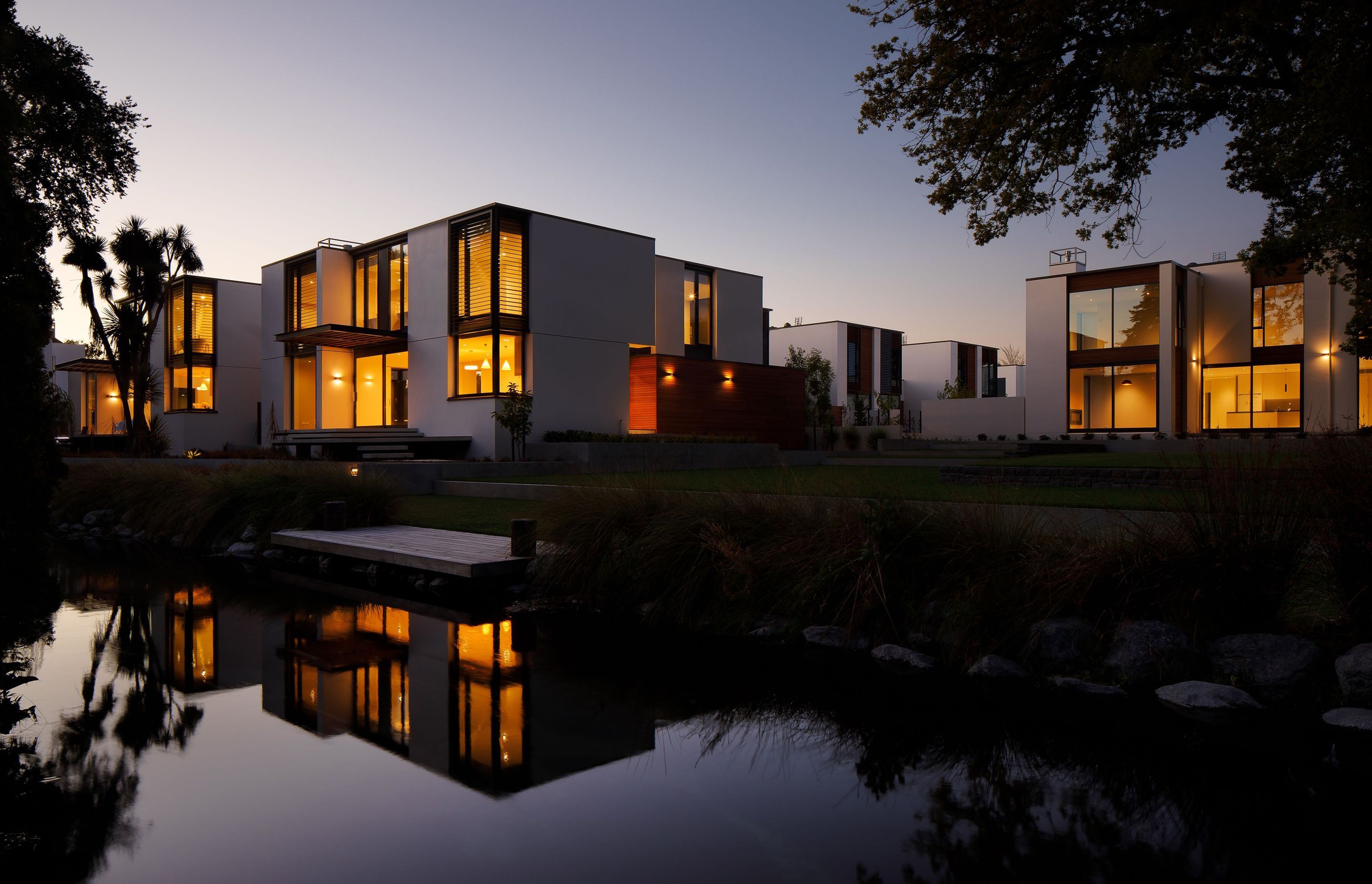
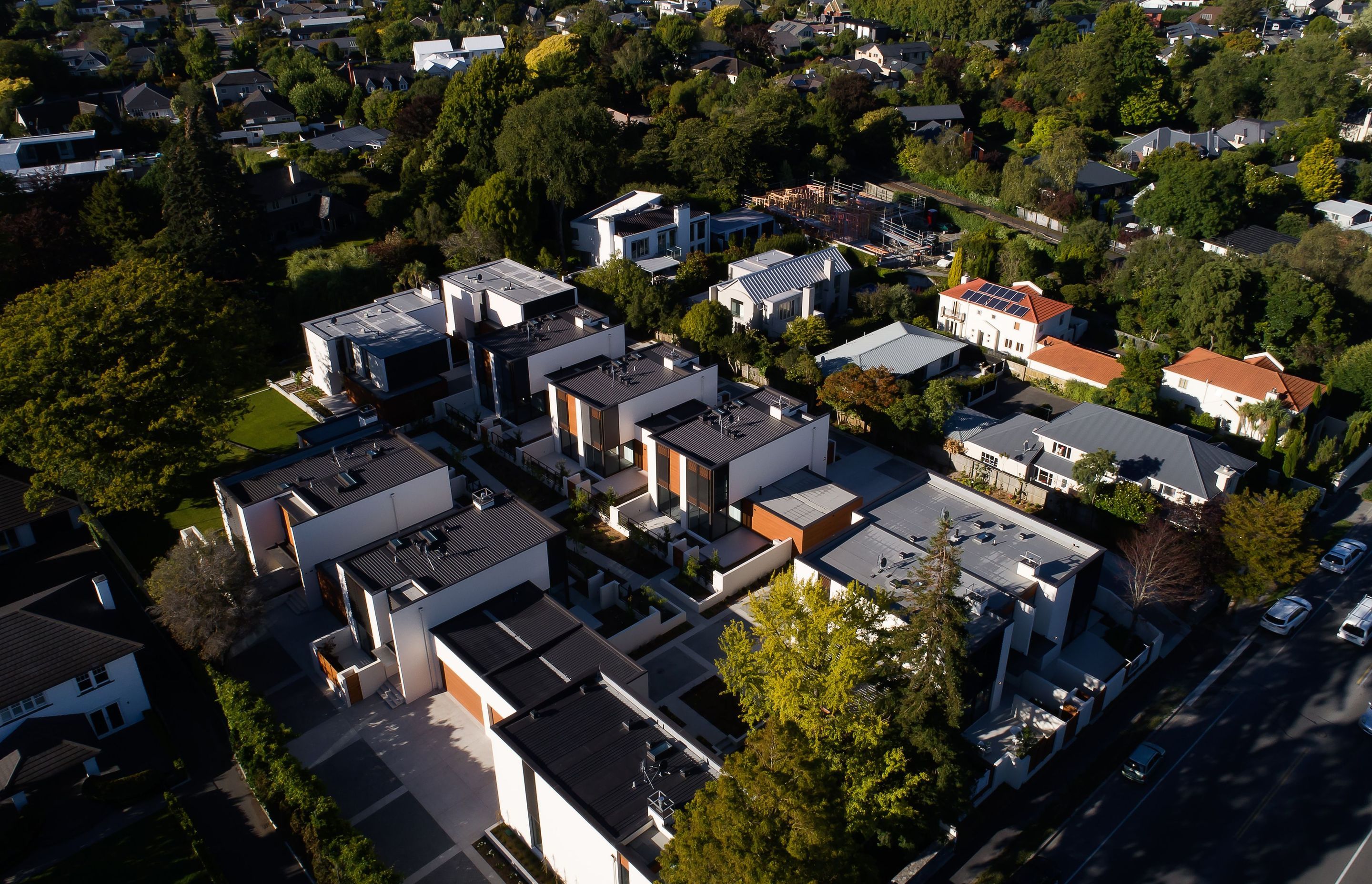
Products used in
Lintrathen Gardens Townhouses
Professionals used in
Lintrathen Gardens Townhouses
More projects from
Sheppard & Rout Architects
About the
Professional
We aim to produce humanist architecture comprised of stimulating and inspirational spaces and places.
We are a design-based practice that believes in providing tailor-made solutions to an individual client's needs. The fundamental objective of the practice is to develop architecture that is appropriate to its specific site, wider context and intended use while being robust, flexible and environmentally-aware.
These variables are used along with the appropriate structural considerations to develop buildings with well-suited form and style, instead of approaching the design from a stylistic standpoint.
The practice was established in 1982 in Christchurch by David Sheppard and Jonty Rout. In its 40 years the practice has carried out a wide range of projects covering many types and in numerous geographic locations. The founding partners brought to the practice extensive design and construction experience gained while working with other offices in both New Zealand and overseas. Tim Dagg joined Sheppard & Rout in 1986 and Jasper van der Lingen in 1993 and they both joined David Sheppard as Directors in 2006.
With David Sheppard now retired and Jonty very sadly passed away the practice is led by Directors Jasper van der Lingen and Tim Dagg and three Associate Directors; Matt Gutsell, Jonathan Kennedy and Steven Orr.
- ArchiPro Member since2016
- Follow
- Locations
- More information

